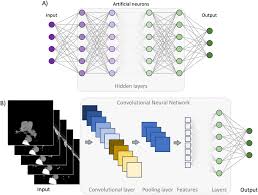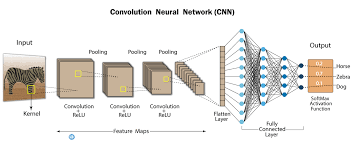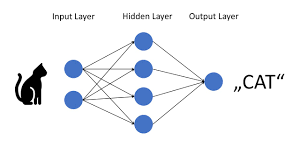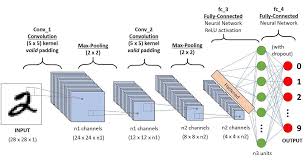Deep Neural Network Algorithm: Revolutionizing Artificial Intelligence
In the realm of artificial intelligence (AI), the deep neural network algorithm stands out as a powerful and transformative technology. Also known as deep learning, this algorithm mimics the way the human brain works, enabling machines to learn from data and make complex decisions with remarkable accuracy.
At its core, a deep neural network is a sophisticated system of interconnected nodes, inspired by the structure of neurons in the human brain. These nodes, or artificial neurons, are organized into layers that process input data and progressively extract higher-level features to make predictions or classifications.
What sets deep neural networks apart from traditional machine learning algorithms is their ability to automatically discover intricate patterns and relationships within vast amounts of data. By leveraging multiple layers of abstraction, these networks can learn to recognize subtle nuances and make sense of complex information in ways that were previously thought to be exclusive to human intelligence.
The applications of deep neural networks are diverse and far-reaching. From image and speech recognition to natural language processing and autonomous driving, this algorithm has revolutionized industries and transformed how we interact with technology on a daily basis.
Despite its impressive capabilities, training a deep neural network requires substantial computational resources and large datasets. However, ongoing research and advancements in hardware have made this technology more accessible than ever before, paving the way for further innovation and breakthroughs in AI.
As we continue to unlock the full potential of deep neural network algorithms, we are witnessing a new era in artificial intelligence—one where machines can learn, adapt, and evolve in ways that were once thought to be beyond reach. The future promises exciting possibilities as we harness the power of deep learning to solve complex problems and shape a more intelligent world.
7 Essential Tips for Optimizing Deep Neural Network Algorithms
- Normalize input data to ensure faster convergence and better performance.
- Choose appropriate activation functions based on the nature of your problem.
- Regularize your model using techniques like L1 or L2 regularization to prevent overfitting.
- Monitor the learning process with validation data to detect issues like overfitting early on.
- Experiment with different network architectures and hyperparameters to optimize performance.
- Use techniques like dropout or batch normalization to improve generalization and speed up training.
- Consider transfer learning if you have limited data, as it can leverage pre-trained models for better results.
Normalize input data to ensure faster convergence and better performance.
One essential tip for optimizing the performance of a deep neural network algorithm is to normalize the input data. By standardizing the input features to have a consistent scale and distribution, we can ensure faster convergence during training and ultimately improve the overall performance of the model. Normalizing the data helps prevent certain features from dominating others, leading to more stable and efficient learning. This simple yet powerful technique can have a significant impact on the effectiveness of a deep neural network, enabling it to learn more effectively and make better predictions.
Choose appropriate activation functions based on the nature of your problem.
When working with deep neural network algorithms, it is crucial to choose appropriate activation functions that align with the nature of your specific problem. Activation functions play a key role in determining the output of each neuron in the network, influencing how information is processed and propagated through the layers. By selecting activation functions that are well-suited to the characteristics of your data and the complexity of your problem, you can enhance the performance and efficiency of your neural network model. Whether you need a function that introduces non-linearities, handles gradient vanishing or exploding issues, or ensures stability during training, thoughtful consideration of activation functions is essential for achieving optimal results in deep learning tasks.
Regularize your model using techniques like L1 or L2 regularization to prevent overfitting.
To enhance the performance and generalization ability of your deep neural network algorithm, it is crucial to incorporate regularization techniques such as L1 or L2 regularization. By applying these methods, you can effectively prevent overfitting, a common issue where the model memorizes the training data instead of learning underlying patterns. Regularization helps to control the complexity of the model by adding penalty terms to the loss function, encouraging simpler and more robust representations. By striking a balance between fitting the training data well and avoiding excessive complexity, regularization plays a vital role in improving the overall stability and predictive accuracy of your deep neural network model.
Monitor the learning process with validation data to detect issues like overfitting early on.
To optimize the performance of a deep neural network algorithm, it is crucial to monitor the learning process using validation data. By comparing the model’s performance on both training and validation datasets, we can detect potential issues such as overfitting at an early stage. Overfitting occurs when the model performs well on the training data but fails to generalize to new, unseen data. By closely monitoring the learning process with validation data, we can make timely adjustments to prevent overfitting and ensure that our model achieves robust and reliable results.
Experiment with different network architectures and hyperparameters to optimize performance.
To maximize the performance of a deep neural network algorithm, it is crucial to experiment with various network architectures and hyperparameters. By exploring different configurations, such as the number of layers, types of activation functions, and learning rates, researchers and developers can fine-tune the model to achieve optimal results. This iterative process of experimentation allows for better understanding of how the network behaves under different settings and helps in identifying the most effective combination that leads to improved performance and accuracy in tasks such as image recognition, natural language processing, and more.
Use techniques like dropout or batch normalization to improve generalization and speed up training.
When working with deep neural network algorithms, incorporating techniques like dropout and batch normalization can significantly enhance the model’s generalization capabilities and accelerate the training process. Dropout is a regularization technique that randomly deactivates a fraction of neurons during training, preventing overfitting and promoting robustness in the network’s predictions. On the other hand, batch normalization normalizes the input of each layer, reducing internal covariate shift and enabling faster convergence during training. By utilizing these techniques effectively, developers can improve the overall performance of deep neural networks while optimizing efficiency and speed.
Consider transfer learning if you have limited data, as it can leverage pre-trained models for better results.
When working with limited data in deep neural network algorithms, it is advisable to consider transfer learning as a valuable strategy. By leveraging pre-trained models, transfer learning allows for the utilization of existing knowledge and patterns learned from vast datasets, enabling better results even with limited data. This approach not only accelerates the training process but also enhances the model’s performance by adapting to new tasks or domains effectively. Transfer learning serves as a practical solution for optimizing deep neural network algorithms in scenarios where data scarcity poses a challenge, ultimately leading to more robust and accurate outcomes.




